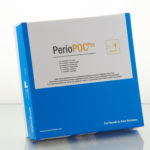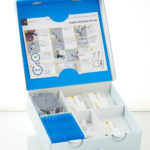The GENSPEED PerioPOC Pro test provides a rapid, sensitive and specific detection of the five most relevant periodontal pathogens directly in your dental office.
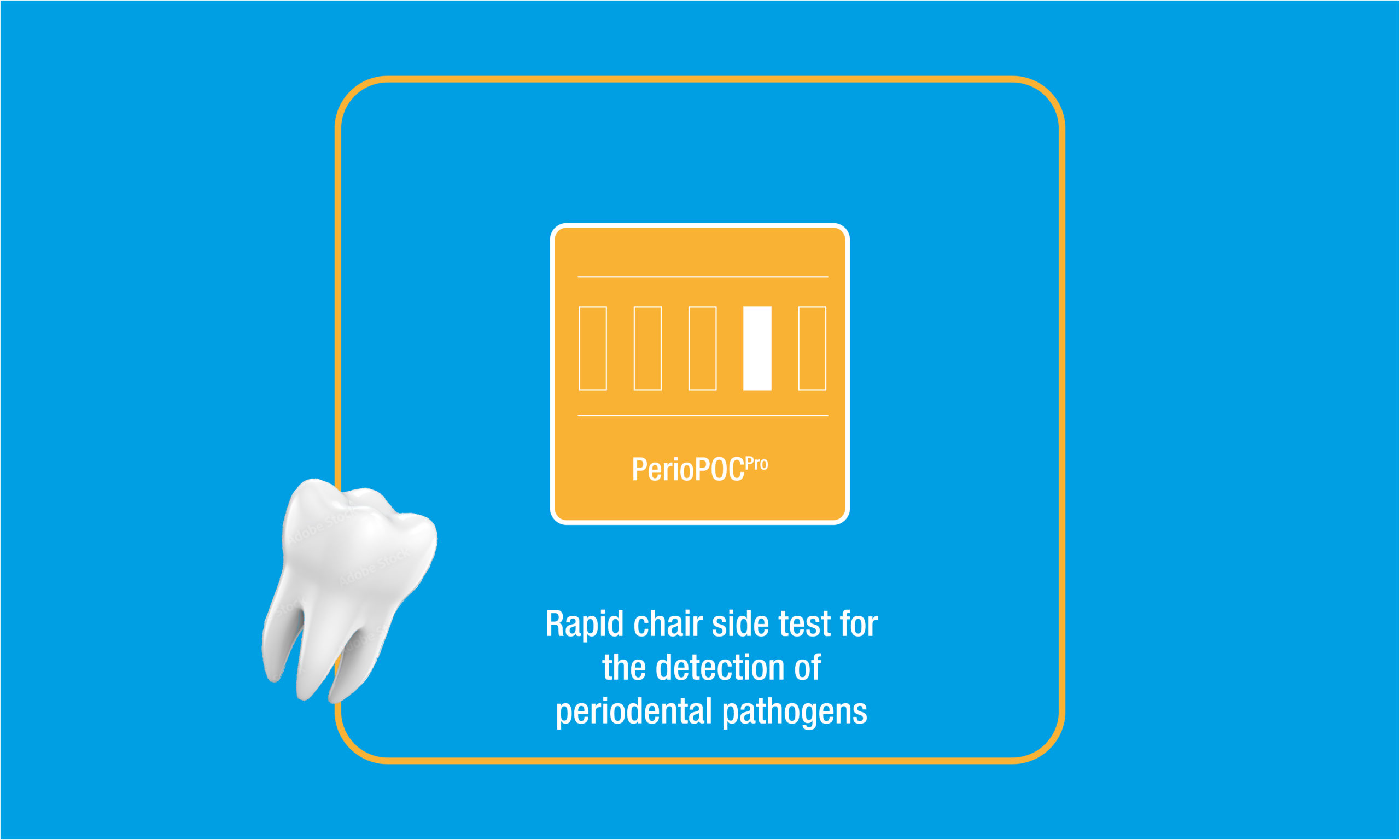
Fifty percent of people aged over 40 years suffer from periodontitis. Despite those numbers that mark periodontitis as one of the most common infectious diseases it is widely neglected.
Microbial testing is well established for subgingival plaque samples. However, many dentists refrain from this method, mainly because patient samples must be sent to a specialised laboratory causing additional logistic effort and costs for the dentist.
Quoting the Consensus paper (2010): Professional guidelines for microbial diagnostics of periodontitis in the dental office.
»The weaknesses of the currently available methods lie in the costs for the patients and in the time delay for commencing the therapy while waiting for the laboratory results.1.«
PerioPOC and the new automated PerioPOC Pro enable the dentist to obtain reliable results within a few minutes. All patients at risk for periodontitis or peri-implantitis will profit form this state-of-the-art service.
Quoting the Consensus paper (2010): Professional guidelines for microbial diagnostics of periodontitis in the dental office.
»A chair-side test to determine the microbial spectrum would be highly desirable1.«
*International Health Care Foundatio
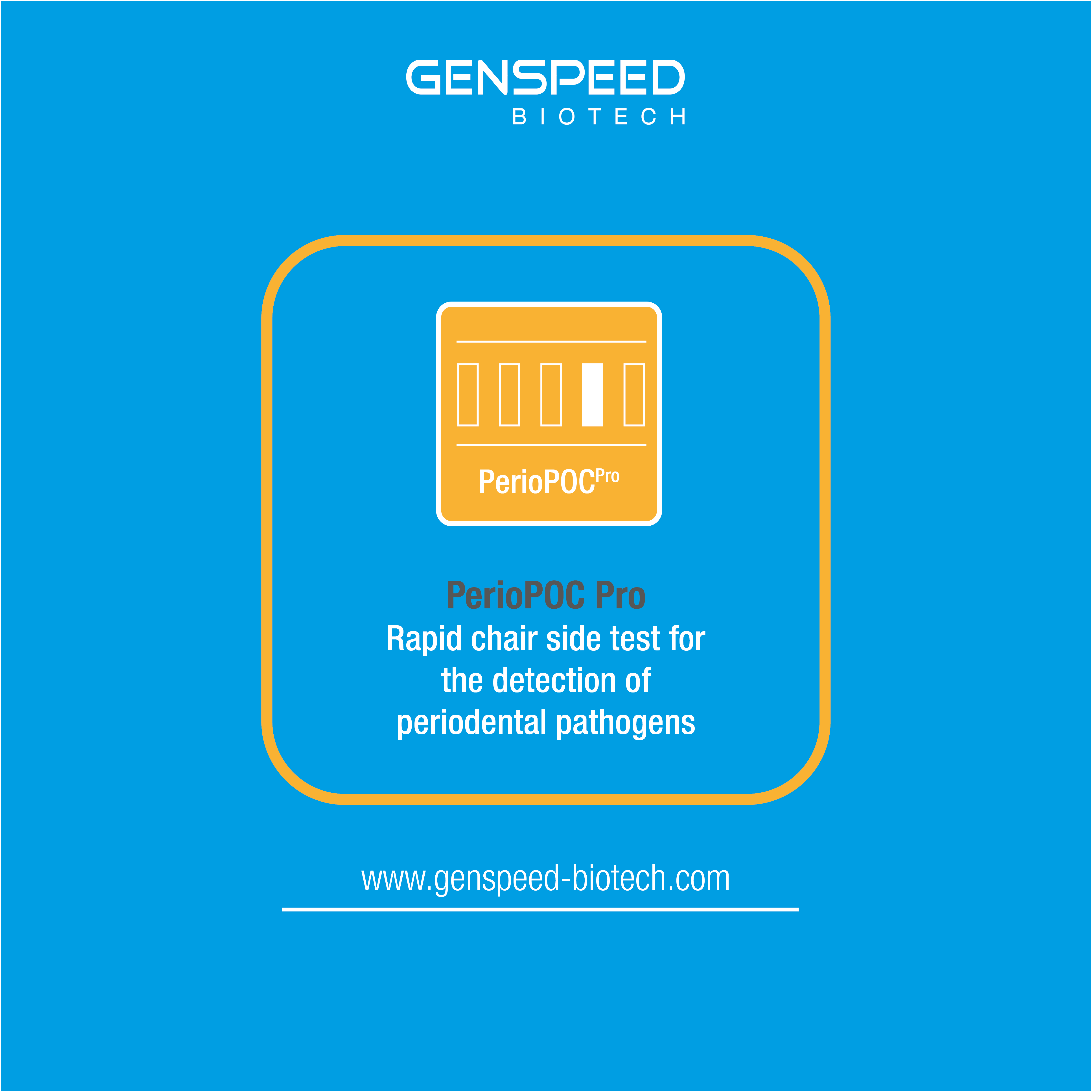
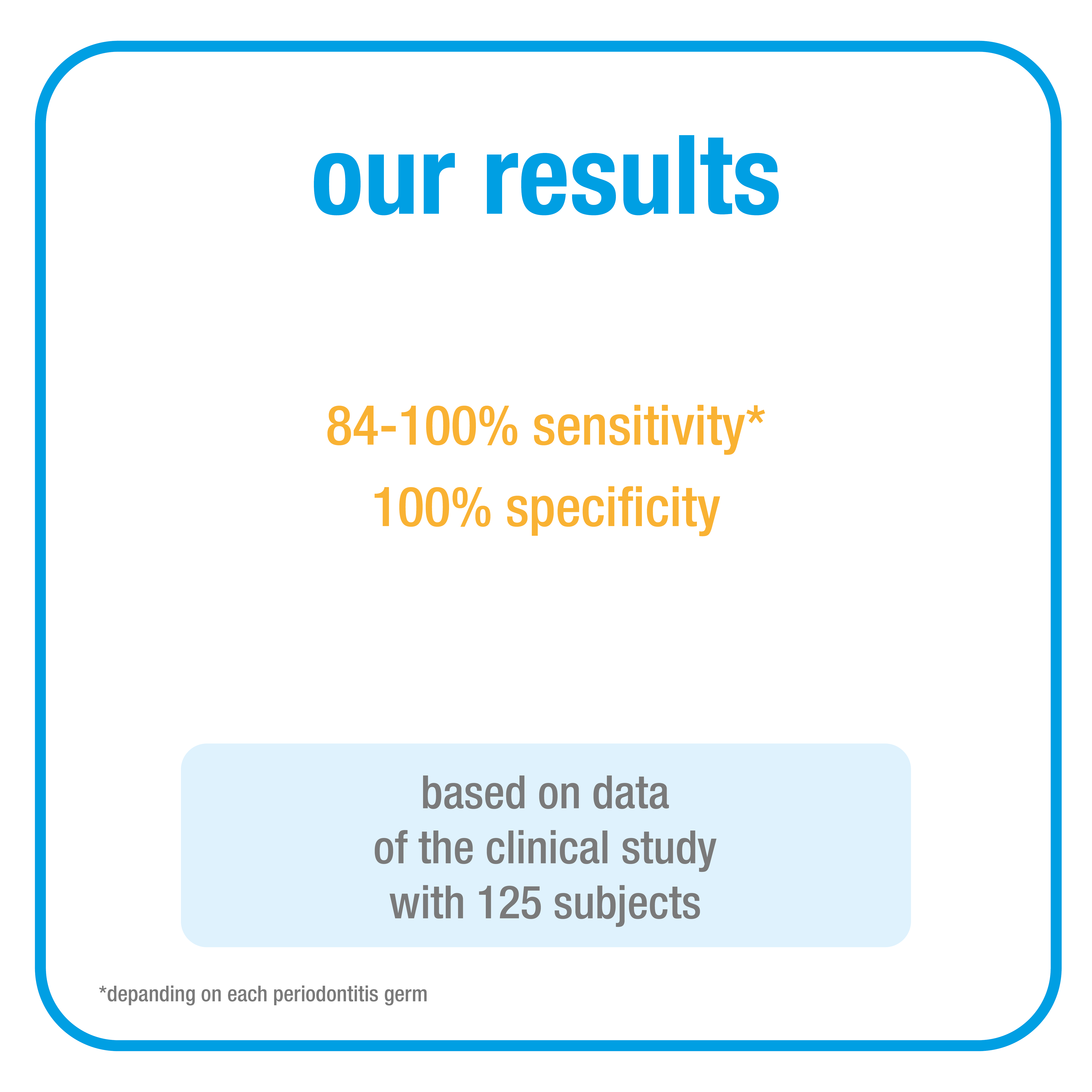

Clinically Relevant
Detection of the 5 Most Relevant Periodontitis Pathogens:
- Td: Treponoma denticola
- Tf: Tannerella forythia
- Pg: Porphyromonas
- Pi: Prevotella intermedia
- Aa: Aggregatibacter actinomycetemcomitans
The fully automatic PerioPOC Pro test has a detection limit in the range of 10,000 bacteria per analysis, so a low bacterial load, as also found in healthy individuals, is not considered a positive result.

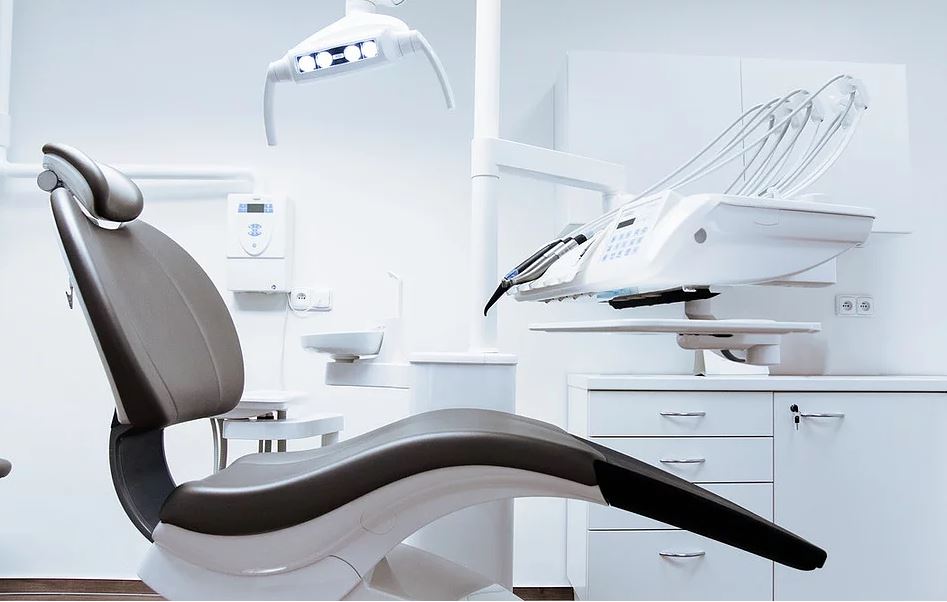
The use of the PerioPOC Pro test system enables you to:
- Provide individual prophylaxis and targeted treatment of periodontal diseases und Peri-Implantitis
- Motivate patients for periodontal therapy and home oral hygiene
- Monitor success and progress
- Implement comprehensive medical prevention (pregnancy/planning for children, diabetes, Alzheimer’s, cancer)
- Enhance innovation and efficiency
Questions about the product?
PerioPOC Pro was developed to help you as a dentist detect periodontal problems early. Since periodontitis usually does not cause pain and the shift from a healthy mixed oral microbiome to an overgrowth of pathogenic bacteria can go unnoticed, it is important to define your risk group. Similar to other prophylaxis programs, individuals aged 45 and older should be regularly (once a year) checked by PerioPOC Pro for their periodontal health.
Clinical signs such as bleeding on probing and probing depths are indicators of the presence and extent of existing damage. However, they do not reveal the actual cause, such as a change in the oral flora towards a high bacterial load with periodontal pathogens. Additionally, systemic diseases (e.g., diabetes) or certain medications can also be triggers, and the therapeutic approaches will accordingly differ.
As a specialist, you will certainly assess the problem correctly. However, many patients tend to underestimate gum problems and decline periodontal treatment because they do not consider the importance of maintaining periodontal health to be significant. PerioPOC Pro can significantly facilitate communication with the patient and acceptance, as the visible test results create a convincing “seeing is believing” attitude. Moreover, thorough diagnostics with each patient inspire trust and strengthen the patient’s cooperation and adherence to the treatment steps.
The new guidelines for the staging and grading of periodontal and peri-implant diseases clearly state that necrotizing periodontitis should be considered a separate disease entity, characterized by prominent bacterial invasion […], rapid destruction of soft tissue […], and rapid improvement following specific antimicrobial treatment.
While periodontitis observed in association with a systemic disease must be considered a manifestation of the systemic disease, in which antibiotic administration does not improve the clinical picture.
Therefore, there should be different treatment protocols for various types of periodontitis. Dentists should also be aware of the increasing problem of bacterial antibiotic resistance and carefully evaluate the use of broad-spectrum antibiotics.
The result of the PerioPOC Pro test tells you whether periodontitis is caused by bacteria and which bacteria are present.
Some types of bacteria, such as Aggregatibacter actinomycetemcomitans and Porphyromonas gingivalis, invade periodontal tissue and dentinal tubules. Therefore, the use of systemic antibiotics is recommended. Other periodontal pathogens, such as Treponema denticola, Tannerella forsythia, and Prevotella intermedia, can often be successfully removed through purely mechanical treatment.
Dentists should be aware of the increasing problem of bacterial antibiotic resistance and carefully evaluate the use of broad-spectrum antibiotics. The PerioPOC Pro assessment of bacteria before the start of treatment allows for individualized and targeted therapy, reduces the unnecessary use of antibiotics, thereby saving money, sparing your patients from side effects, and preserving the effectiveness of antimicrobial agents.
The simplest method to bill the PerioPOC Pro test is to integrate the costs into follow-up therapy or prophylactic treatment.
Most patients affected by periodontitis experience little pain, and their own perception is that their teeth are fine. Therefore, it could be difficult to convey the necessity of periodontal treatment. However, almost all patients understand that the presence of bacteria is not a good sign. The immediately visible results of the PerioPOC Pro provide convincing evidence.
Potential transmission or spread of bacteria to spouses or other close family members can also be convincingly demonstrated here.
Similarly, patients with dental implants often feel that it is not necessary to thoroughly clean their artificial teeth. Here too, PerioPOC Pro can help patients understand that the presence of these bacteria can cause implant failure.
In all cases, the follow-up costs will be much higher than the costs for the initial examination, treatment, and maintenance of oral hygiene.
ou probably have many more potential clients for PerioPOC Pro than you realize. Approximately 50% of people over the age of 45 have gum problems. Additionally, there are specific risk groups, such as smokers or individuals with compromised immune systems. For this group of people, a basic periodontal examination should also be conducted as part of regular check-ups. Since changes in the bacterial composition in the mouth are usually the primary cause of periodontal diseases, it makes sense to perform a bacterial determination even before the manifestation of periodontitis.
Peri-implantitis is caused by the same bacteria as periodontitis, and often the latter is the reason for the use of an implant. The success of a dental implant largely depends on maintaining an inflammation-free oral environment. PerioPOC Pro should be used both for preoperative assessment and for regular follow-up visits to prevent peri-implantitis.
PerioPOC Pro was evaluated in a clinical study and has been used by numerous clinicians throughout Europe and outside of Europe. While the specificity for each of the five pathogens is 100%, the sensitivity is clinically relevant and is approximately 10⁴ (10,000) bacteria per test. Even though some bacteria (including pathogenic ones) may be present in healthy subjects, PerioPOC Pro does not yield false positive results (see clinical study). Additionally, PerioPOC Pro is an RNA-based test that only detects living bacteria, making it a perfect tool for monitoring treatment success.
I had a patient with very deep periodontal pockets and clinical attachment loss (CAL). I performed the PerioPOC Pro test. Why were no bacteria detected?
There could be several reasons for this:
If all controls were valid (including the total bacterial load, TGL), the actual reason for the CAL might not be the presence of periodontal pathogens, but a systemic disease or a medication-induced condition (e.g., chemotherapy, blood pressure medications, etc.). Ask your patient about these backgrounds.
The bacterial load of the five periodontal pathogens in deep pockets may be below the detection limit of PerioPOC Pro. Try taking samples from a nearby site to assess the presence of these pathogens.
The paper tips may not have reached the bottom of the periodontal pocket. Try sampling a less deep area nearby to assess the presence of these pathogens.
The sensitivities of PerioPOC Pro for the individual bacterial species are as follows:
Treponema denticola (T.d.)
91.3%Prevotella intermedia (P.i.)
85.7%Tannerella forsythia (T.f.)
86.3%Aggregatibacter actinomycetemcomitans (A.a.)
100%Porphyromonas gingivalis (P.g.)
83.8%
For in vitro diagnostic tests, the term sensitivity (empfindlichkeit) is one of the most important performance characteristics. Test sensitivity is the ability to correctly identify the desired parameter (e.g., bacteria or biochemical markers).
In the case of PerioPOC Pro, it has been shown that the test correctly identifies 100% of Aggregatibacter actinomycetemcomitans. However, 83.8% of Porphyromonas gingivalis were correctly identified. In other words, in 1.72 out of 10 cases, the test showed a negative result even though these bacteria were detected by a (DNA-based) comparison system.
Essentially, there is no test that is 100% sensitive for all cases and all parameters. There is always some uncertainty, which is represented by the stated sensitivity.
a) Time and Convenience: Since the samples do not need to be sent to an external lab, you can show the patient the results during the first visit and simultaneously create a treatment plan.
b) Sensitivity and Overdiagnosis: Most lab tests are highly sensitive DNA-based tests that can detect very small numbers of pathogens. While this is generally a great tool, it can lead to “overkill” with inappropriate use of antibiotics, increased side effects from overtreatment, and eventually loss of credibility.
c) Detection of Living Bacteria and Clinical Relevance: PerioPOC Pro is based on the detection of living (metabolically active) bacteria. Its higher detection limit is clinically relevant (distinguishing between normal colonization and an infectious state) and prevents false positive results. The 3-step semi-quantitative evaluation of PerioPOC Pro allows you to monitor your treatment success.
